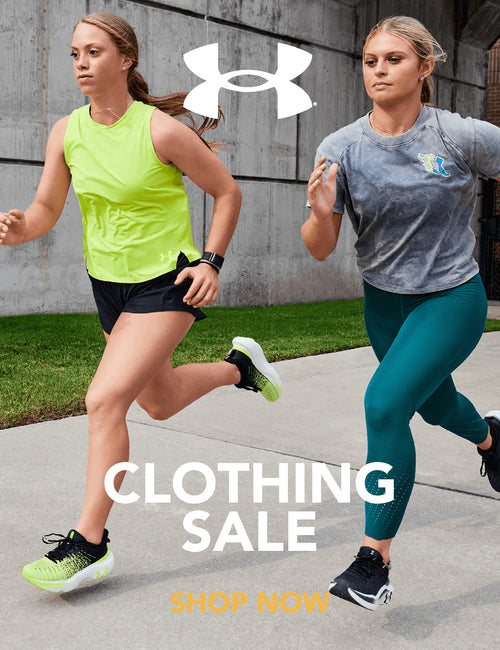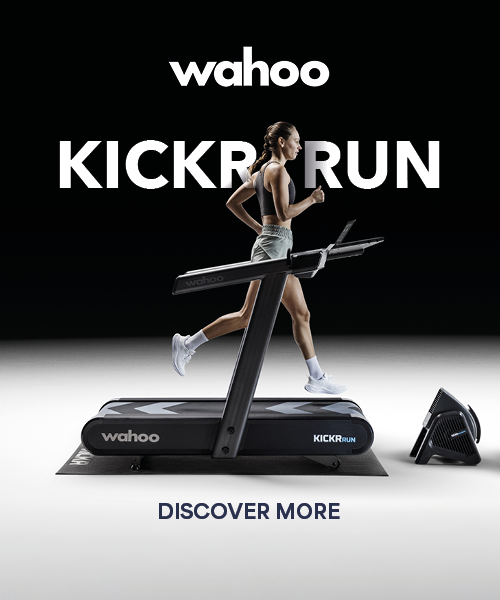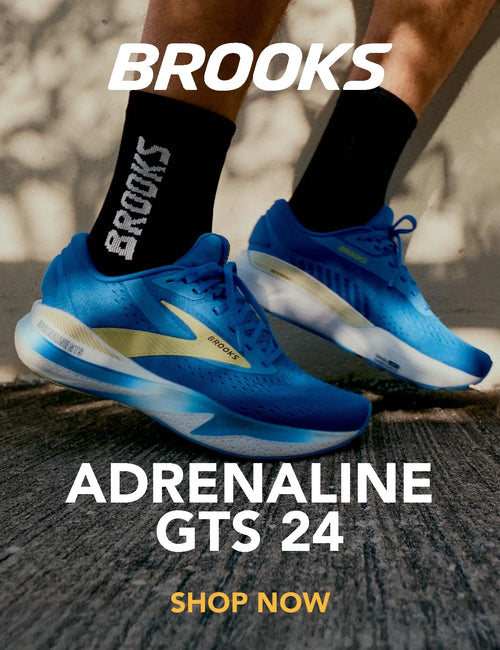Running in the rain can be such an invigorating and rewarding experience if you're properly prepared. Whether you’re training for a race or committed to keeping up with your regular running routine, don’t let the weather stop you from hitting your fitness goals. Rain-soaked miles can not only be a fun experience, it can also boost your mental resilience and keep you cool whilst you’re working up a sweat. The key to any successful run is to ensure you’re equipped with the right gear and mindset, and this is the same for running in rainy conditions.
If you’re interested in finding out more about helpful tips for running in wet weather and the right clothing to wear to keep you dry and comfortable, we’re here to help. Keep reading as we cover the essential clothing and footwear recommendations and provide practical tips for running in the rain so you can achieve your goals no matter the weather.
How do you run comfortably in the rain?
The main thing to remember when choosing to run in the rain is to accept that you are going to get wet and to embrace it so you can stay focused on your run and make the most of the experience. Once you’ve come to terms with the idea of embracing the rain, the best way to ensure you can run comfortably is to wear the right clothing. We suggest avoiding cotton clothing as it easily absorbs water, which can cause your clothes to feel heavy and uncomfortable. Instead, stick to lightweight, moisture-wicking materials. After your run, change out of your wet clothes quickly and dry off as soon as possible to stop your body from becoming too cold. If your shoes are damp, be sure to let them dry properly to avoid unwanted odours and damage from occurring.
Your running technique can also make a great difference to how comfortable you stay throughout your run. The main thing to remember is your safety, especially if running on uneven ground on trails or near main roads - consider your footing, how fast you’re running and your visibility to others.
We suggest shortening your stride, taking smaller steps to help improve your stability on slippery ground and sticking to a slower pace than usual to reduce the risk of injury. If you can, try to stay light on your feet to minimise your risk of slipping and be mindful of your footing, avoiding puddles where possible that may be deeper than they appear.
What to wear running in the rain
Whether it's a light drizzle or a heavy downpour, wearing the right clothing to run in less favourable weather conditions is key to your comfort and performance. There are a few key things to consider when choosing what to wear when running in the rain, which we have listed below.
Invest in a reliable waterproof jacket
The most important layer when running in the rain is a waterproof jacket. We recommend opting for a lightweight jacket with tapered seams to keep rain out. Look for a jacket that is made from breathable fabrics and has suitable ventilation to prevent you from overheating. Avoid heavy raincoats, as although they provide adequate protection, they may make you sweat too much when running and feel uncomfortable on the skin. Fabrics to look out for when choosing a running jacket that will keep you dry are GORE-TEX, eVent, and Pertex.
Opt for moisture-wicking materials
When it comes to your base layers, steer away from heavy materials like cotton as they will soak up the rain, and instead choose synthetic, moisture-wicking fabrics like polyester, nylon, Tencel and Lycra. These fabrics are quick-drying and won’t cling to your skin when wet, reducing the chances of uncomfortable chafing. In colder temperatures, opt for long-sleeve base layers and compression tights to keep warm. In more humid, rainy weather, choose shorts and short-sleeved tops to keep you cool and comfortable.
Choose appropriate footwear
Ensuring you have appropriate footwear for running in the rain is not only important for keeping your feet dry but also for keeping you stable. Running shoes with optimal grip are essential if you’re running in heavy rain or on difficult terrains, so that you can reduce your risk of slipping. Waterproof running shoes are available and are made from materials like GORE-TEX that help to keep the water out, however, you can choose to use your usual running shoes so long as you allow them to dry properly after use. We would also suggest choosing socks made from moisture-wicking materials to reduce friction and prevent uncomfortable, water-logged feet.
Consider your visibility
Running in the rain will require you to choose items of clothing that keep the rain out of your eyes so that you can see properly. Equally important is being easily visible to vehicles to keep you safe. We recommend choosing a cap or visor with a brim to shield your face, or a pair of sunglasses to protect your eyes from heavy rain and reduce squinting. Choosing items of clothing that have reflective details or are bright in colour is also important for good visibility in overcast conditions.
Waterproof running jackets


High Point 2.0 Waterproof Mens Running Jacket
Moisture-wicking running clothes


Tech Reflect Half Zip Long Sleeve Mens Running Top


How do I keep my feet dry when running in the rain?
Keeping your feet dry when running in the rain can be tricky at times, but with the right shoes and helpful tips, you can help minimise discomfort and reduce the risk of blisters. Of course, looking for a pair of running shoes that are made from waterproof materials such as GORE-TEX can help keep rain out whilst still providing breathability. If you have a trusted pair of running shoes that aren’t weather-resistant, there is also the option to apply a water-repellent spray to them for added protection.
Designed for trail runners, gaiters can also provide you with a waterproof cover for your trainers that will help prevent water and debris from getting in. Neoprene shoe covers or weatherproof toe caps can also provide extra protection on top of your trainers to keep your feet as dry and comfortable as possible.
A purpose-designed pair of running socks can also help keep your feet dry, as well as reduce your risk of blisters. Avoid cotton socks as they will hold onto the most water, and instead opt for moisture-wicking, synthetic socks that will reduce friction. If your feet are prone to blisters, consider double-layering your socks to help prevent any discomfort. If you’re running in a location away from home, we suggest bringing an extra pair of shoes and socks to change into post-run to prevent your feet from staying damp and cold for too long.
Water-resistant running shoes


Ghost 17 GORE-TEX Womens Running Shoes


Adrenaline GTS 24 GORE-TEX Womens Running Shoes
Even with water-resistant running shoes and socks, we would still recommend trying to avoid as many puddles as possible to prevent your trainers from getting water-logged. Keep in mind that your running routes may be more slippery than usual so opt for trainers with good grip and be mindful of your stride to keep you as stable and safe as possible.
Embrace all weathers with Start Fitness
Be prepared to hit your personal bests in all weather conditions with our wide range of running clothing, footwear and fitness accessories from top sportswear brands here at Start Fitness.

























